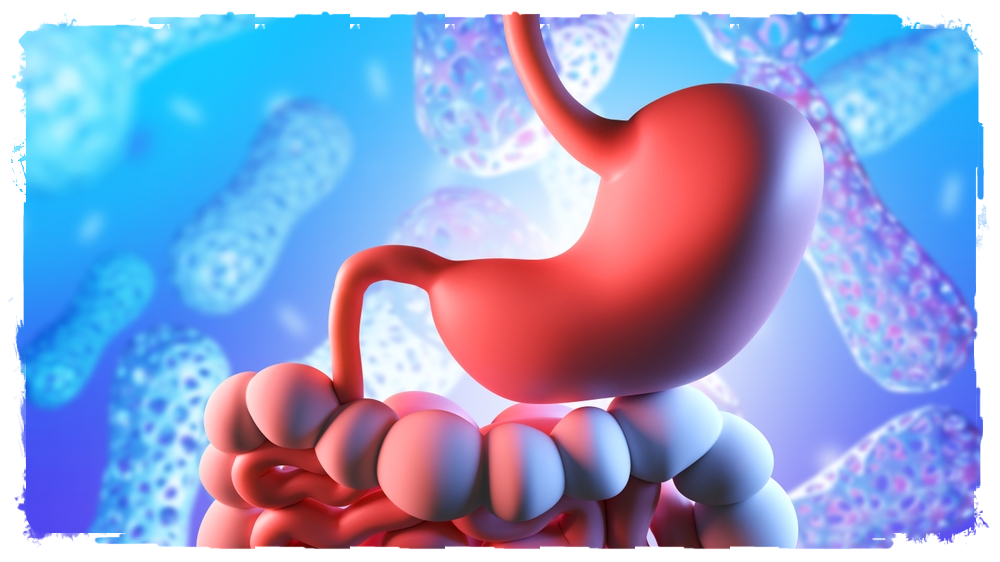WORDS MARAM T.M. BESAISO & DR SHANTHI KRISHNASAMY
 FEATURED EXPERT FEATURED EXPERTMARAM T.M. BESAISO Master’s Student in Clinical Nutrition Faculty of Health Sciences Universiti Kebangsaan Malaysia |
 FEATURED EXPERT FEATURED EXPERTDR SHANTHI KRISHNASAMY Senior Lecturer and Coordinator of the Master of Clinical Nutrition Dietetics Programme Universiti Kebangsaan Malaysia |
Probiotics are living organisms that confer health advantages when ingested or used on the body and can be discovered in various sources.
These include fermented foods like yoghurt, as well as dietary supplements.
While some may think that probiotics are only beneficial for gut health or specific conditions like diarrhoea, the research delves deeper to reveal that they are crucial for our overall well-being, extending from gut health to the immune system and beyond.
THE BENEFITS OF PROBIOTICS
- Eases digestion by breaking down complex carbohydrates, dietary fibres, and certain sugars that our bodies can’t digest on their own.
- Produce short-chain fatty acids (SCFAs) that nourish gut cells and contribute to overall gut health.
- Compete with harmful bacteria, thus preventing these harmful bacteria from causing digestive issues like diarrhoea, constipation, irritable bowel syndrome, and inflammatory bowel diseases.
- Contribute to immunity and may have anti-cancer properties.
- There is growing evidence that probiotics positively impact eczema management in children and reduce the risk of urinary tract infections, particularly among women.
However, ongoing research continues to explore their effects, especially in healthy individuals, and further investigation is needed to provide a clearer understanding.
IF YOU ARE INTERESTING IN TAKING PROBIOTICS, HERE IS HOW YOU CAN CHOOSE THE RIGHT ONE FOR YOU
The market for probiotic supplements has expanded significantly, offering various forms such as tablets, pills, chewable gummies, liquids, powders, and fortified foods. These options cater to different age groups and vary in price and claimed health benefits.
According to pharmacists, the powder form is popular due to its ease of consumption as it can be easily mixed with food.
When planning to purchase probiotics, consider the following factors:
Look at the CFU
Ensure that it contains living and active microorganisms. The potency of probiotics is measured in colony-forming units (CFU), and a higher CFU count often indicates a more potent product.
Consider the Type of Probiotic Strains Present
Various probiotic strains are like a squad of superheroes, each with unique power to tackle different health issues.
Mixing and matching probiotics, especially Lactobacilli and Bifidobacteria, can be the secret weapon against eczema in tiny tots. In addition, when calming down inflammation in urinary tract infections, trust Lactobacillus rhamnosus GR-1 and Lactobacillus reuteri RC-14 to save the day. (Anukam et al .2009).
Remember, there’s no one-size-fits-all hero here. Every health concern might need its special probiotic warrior or a dream team. So, grab your cape and give these friendly bacteria a whirl for 12 weeks to see if they’re your perfect sidekicks.
Probiotics in Foods May be a More Affordable Option
Probiotic supplements can be expensive.
Those on a tight budget can still obtain probiotics through natural sources. Consider incorporating yoghurt, kefir, sauerkraut, miso, sourdough bread, kimchi, tempeh, kombucha and pickles into your diet.
DON’T JUST RELY ON SUPPLEMENTATION, HOWEVER!
The debate over whether to obtain probiotics from food or supplements remains controversial.
Some argue that a healthy, balanced diet rich in probiotic foods is sufficient for most individuals. To support the growth of beneficial gut bacteria, consider consuming foods that promote their proliferation.
However, while incorporating these nutritious whole foods into your diet is beneficial, they should not be seen as a cure-all for all health conditions.
Last but not least, a holistic approach to health, including a balanced diet and lifestyle modifications, should be your primary focus.
This article is part of our series on tips and advice for leading a healthy lifestyle.
|
References:
- Anukam, K. C., Hayes, K., Summers, K., & Reid, G. (2009). Probiotic Lactobacillus rhamnosus GR-1 and Lactobacillus reuteri RC-14 may help downregulate TNF-Alpha, IL-6, IL-8, IL-10 and IL-12 (p70) in the neurogenic bladder of spinal cord injured patient with urinary tract infections: a two-case study. Advances in urology, 2009, 680363. https://doi.org/10.1155/2009/680363
- Garzon Mora, N., & Jaramillo, A. P. (2024). Effectiveness of probiotics in patients with constipation: A systematic review and meta-analysis. Cureus, 16(1), e52013. https://doi.org/10.7759/cureus.52013
- Hemarajata, P., & Versalovic, J. (2013). Effects of probiotics on gut microbiota: mechanisms of intestinal immunomodulation and neuromodulation. Therapeutic advances in gastroenterology, 6(1), 39–51. https://doi.org/10.1177/1756283X12459294
- McFarland, L. V., & Goh, S. (2019). Are probiotics and prebiotics effective in the prevention of travellers’ diarrhea: A systematic review and meta-analysis. Travel medicine and infectious disease, 27, 11–19. https://doi.org/10.1016/j.tmaid.2018.09.007
- Tsai, Y. T., Cheng, P. C., & Pan, T. M. (2012). The immunomodulatory effects of lactic acid bacteria for improving immune functions and benefits. Applied microbiology and biotechnology, 96(4), 853–862. https://doi.org/10.1007/s00253-012-4407-3
- Vasant, D. H., Paine, P. A., Black, C. J., Houghton, L. A., Everitt, H. A., Corsetti, M., Agrawal, A., Aziz, I., Farmer, A. D., Eugenicos, M. P., Moss-Morris, R., Yiannakou, Y., & Ford, A. C. (2021). British Society of Gastroenterology guidelines on the management of irritable bowel syndrome. Gut, 70(7), 1214–1240. https://doi.org/10.1136/gutjnl-2021-324598
- Zuccotti, G., Meneghin, F., Aceti, A., Barone, G., Callegari, M. L., Di Mauro, A., Fantini, M. P., Gori, D., Indrio, F., Maggio, L., Morelli, L., Corvaglia, L., & Italian Society of Neonatology (2015). Probiotics for prevention of atopic diseases in infants: systematic review and meta-analysis. Allergy, 70(11), 1356–1371. https://doi.org/10.1111/all.12700













